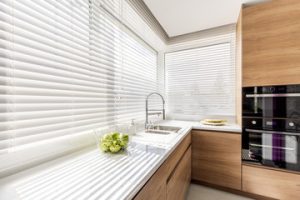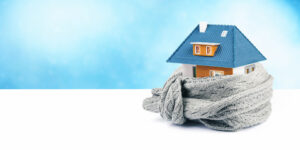Window blinds are a classic window treatment option. With their slatted design, they can work with many different styles of decor and provide a great deal of versatility.

Choose a slat size appropriate to the window’s width. Larger slat sizes offer less obstruction of the view to outdoors and are best for rooms where you want to preserve a scenic view. Visit https://www.customblindsandshadesky.com/ for more information.
Keeping your home clean is a vital aspect of maintaining a healthy lifestyle. A cluttered space not only creates an unattractive aesthetic, but it also can cause problems such as difficulty in concentrating and stress. The good news is that window blinds are one of the easiest to clean among all window treatments, making this task a breeze.
All you need to do is dust regularly, and the slats will stay free of dirt and grime. The simplest way to do this is by using a vacuum cleaner’s brush attachment or a feather duster, which can remove even the most stubborn of debris.
Another option is to use a solution of water and mild soap to wipe down your blinds, which works well for both wood and vinyl blinds. However, before you go ahead and do this, make sure the cleaning solution is safe for your type of window blinds. Certain chemicals can damage your blinds and leave a residue, so always test the product on an inconspicuous part of the blind first.
Aside from a regular dusting, there are many other ways to keep your blinds in good condition. For example, cellular shades—which are becoming more popular with homeowners—have an added benefit of being easy to maintain and clean. They’re made from a hardy, anti-static fabric that repels dust and makes it easier to wipe away dirt. If you’re considering upgrading your current window blinds, or buying new ones, this is definitely something to consider.
Skylight blinds, on the other hand, require a little bit more work. Typically mounted into the ceiling, you’ll need a ladder or stool in order to reach them to do a thorough cleaning. This isn’t an issue if you opt for a long feather duster, which will allow you to reach even the most difficult to access parts of the blind.
No matter what type of window blinds you have in your home, the key to keeping them looking their best is a consistent cleaning routine. Dusting once a week or two is usually enough, but in case your window blinds are covered with grease or other sticky substances, you can simply wipe them down with a cloth moistened with a little water and soap. Be careful not to get the window blinds too wet, however, as they can warp or crack when exposed to too much moisture.
Blocks the Sun’s Rays
The right window treatments can significantly cut down on harmful UV rays. These rays can damage flooring, furniture, artwork, and other decorative items within the home. Blinds can help protect against them, as they have the ability to absorb or reflect UV radiation. Additionally, they can provide a more precise control over the amount of light that enters a room. Shades can also offer UV protection, but they have the drawback of potentially discoloring over time and may require more manual effort to operate for larger or higher windows.
When selecting UV-blocking window coverings, consider the fabric and opacity of the material. Some fabrics are inherently better at absorbing UV radiation, while others possess special coatings that improve their UV protection capabilities. Additionally, consider a product’s UPF rating, which measures the level of UV protection that it offers.
Generally speaking, blinds are more effective at blocking UV radiation than shades, as their slatted construction provides the most versatility when it comes to controlling light levels and allowing for varying degrees of visibility. They can be angled strategically to diffuse or darken light, and they are typically available in a range of colors and materials that can complement any interior design.
Blinds can offer UV protection while still letting in natural light, which is important for maintaining comfort and boosting a mood. For example, Sheer Window Shadings are a unique hybrid of a shade and a blind, featuring fabric vanes that are encased in an elegant sheer to block sunlight from the inside while allowing it to filter through on the outside. They can be tilted open and closed like blind slats to allow for various lighting conditions throughout the day.
Other window treatment types, such as drapes and roman shades, can also help prevent UV damage to your home. They can be complemented with a blackout lining to fully protect against UV radiation, and they are available in a variety of patterns, colours, and textures that complement any interior design.
Adds Style
Window blinds offer a variety of styles that can match the design of any space. They come in different colors, fabrics and designs that can compliment the interior decor and enhance the beauty of your home. Blinds are also easy to maintain and do not take up wall space like curtains do. They are available in a wide range of options that help to control the amount of light and heat entering a room.
Modern horizontal blinds, also known as Venetian blinds, consist of long hanging slats that are lowered or drawn together by pulling a cord. They are a popular choice for many types of rooms, especially living areas, bedrooms, and dining rooms. They are available in various materials, colors, and styles, including metal, faux wood, and woven wood. Some modern horizontal blinds also come with a built-in blackout liner to provide maximum light filtering and obscurity when needed.
Vertical blinds are another classic window covering that offers a wide variety of colors and designs to suit any style. These are long hanging slats that can be opened in different ways, either by twisting them or using an attached wand to tilt the slats and pull a rod that moves them up or down. They are also available in a wide variety of materials, from flat plastic and fabric to embossed PVC and real wood. They are often paired with a matching valance or cornice to create a sophisticated look that complements the colors and textures of a room.
Both window shades and blinds can add style to a space, but it is important to understand how they each differ in terms of function and appearance. Blinds provide a simple and practical solution to block sightlines while offering control over the amount of light that filters in, while shades give more visual depth with their layered design options and decorative trims.
When choosing the right window treatment, it is essential to consider what each room is used for. For example, a bedroom may require full control of the amount of light that enters at night, in which case a blackout roller shade would be ideal. For more flexible light filtration, you can opt for a lighter roller blind with a sheer fabric layer for daytime use.
Reduces Heat
Window blinds can block out the summer sun’s rays and help keep heat inside during colder weather. This ability to control airflow helps save on energy costs and can also prevent the sun from fading and deteriorating fabrics, carpets and hardwood floors.
They’re also a great way to keep sunlight out of dark rooms where it can cause eye strain, especially for children. Unlike curtains, they feature individual horizontal slats that you can easily adjust to your liking, making them more versatile when it comes to light and privacy control. Blinds come in a variety of materials, colors and styles, allowing you to choose the perfect window covering for your space.
Curtains and drapes are another excellent option for reducing solar heat gain, but they require more care to maintain. These window treatments are often subject to harsh weather conditions, and they can easily get soiled by dust or pet hair. Fortunately, they can also be made more eco-friendly by using an energy-efficient material such as woven cotton or repurposed fabric.
Draperies that are medium to light in color can reduce interior heat gain by up to 33 percent, according to the DOE. These types of window treatments typically feature white plastic backings that reflect sunlight, rather than absorbing it and absorbing its heat. They can be layered with blackout draperies to further improve thermal efficiency.
In addition, insulated cellular shades can reduce heat loss by up to 60 percent and are an excellent choice for helping regulate indoor temperatures in winter. These window treatments are usually thicker than traditional blinds and are installed with a tight fit to ensure they’re more effective at keeping the heat in.
If you want to save even more time and effort, consider getting motorized slats that operate on a track system and can be opened or closed at the push of a button. They can be scheduled to open and close at specific times to help improve energy efficiency, or you can pair them with home automation solutions to control them from a smartphone app or through your voice.


